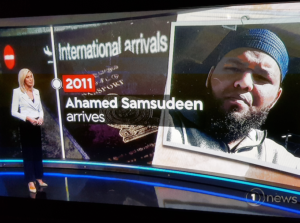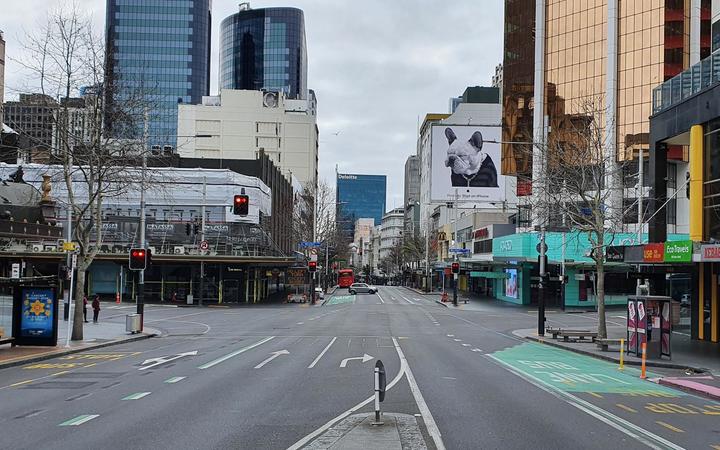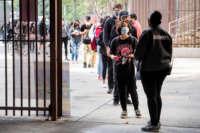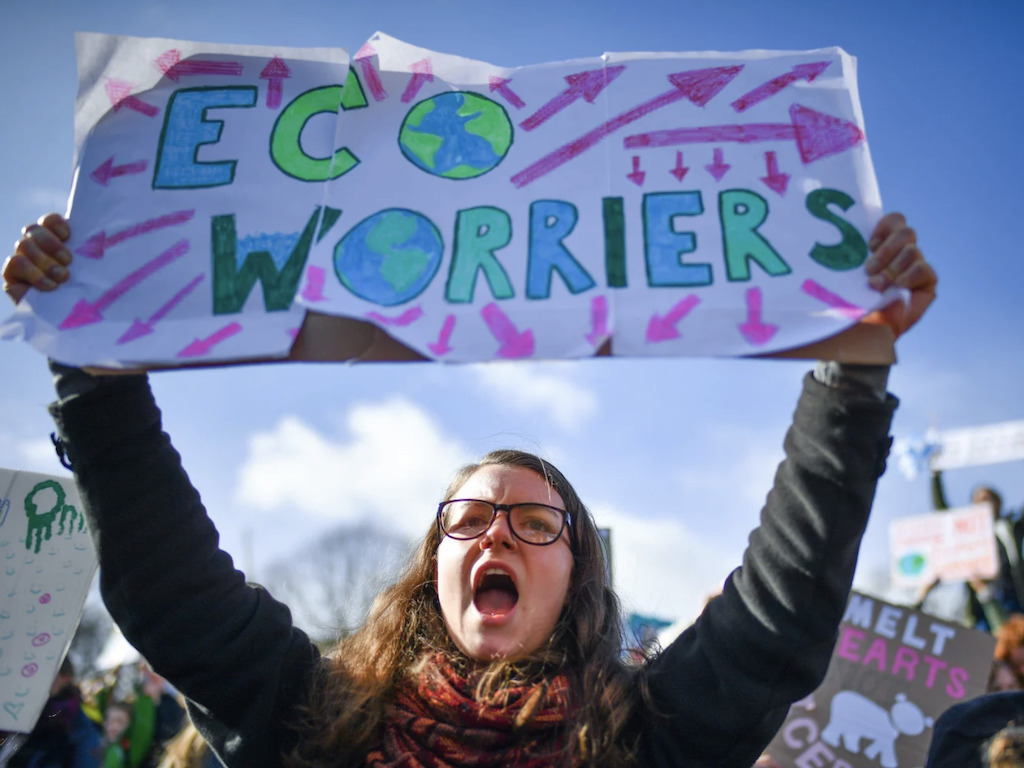Reason can wrestle and overthrow terror.
— Euripides, Iphigenia in Aulis
Medical ethics in the West has long been predicated on informed consent, the oath to do no harm, the notion that good health care is a human right, and the search for scientific truth free from skullduggery and censorship. These tenets are not only integral to a sound health care system but are foundational to a civilized society. Lamentably, each of these sacrosanct principles is anathema to the medical industrial complex. For we have entered the Age of Faucism.
In “Why do patients hate going to the doctor?” by Maheswari Raja, MD, the author reiterates the establishment medical narrative, that there is nothing fundamentally wrong with our health care system, and that the problem is the American patient:
And the truth is that the doctor’s office is an uncomfortable place. It is where one answers the most intimate questions and speaks their most intimate fears — where they have to face the reality of the consequences of their behaviors and misjudgments.
Will physicians devoid of a moral compass, the private health insurance companies, and the pharmaceutical industry ever face the consequences of their “behaviors and misjudgments?” No less delusional and absurd, Dana Hassneiah, MD, writes in KevinMD:
Most people in other jobs would probably not care to help a person who is indifferent and doesn’t want to help himself. But in medicine, your knowledge and morals make you the desperate person in the encounter.
These superior morals were on display in the Covid vaccine propaganda video where doctors tell patients to “Just grow the f**k up and get the vaccine,” an obscenity emblematic of the growing push towards severing ties with the Hippocratic Oath.
Embedded in Faucism are three cults: the Cult of Psychiatry, the Church of Vaccinology, and the Branch Covidians. These branches of American pseudo-medicine inhabit a world of authoritarianism, zealotry, and unreason, and are anchored in a deep-seated contempt for informed consent and the oath to do no harm. Just as Europeans who were suspected of deviating from a once supremely powerful church were labeled heretics, necromancers, and accused of witchcraft and sorcery, those that have the temerity to question the pharmaceutical priesthood are denounced as “conspiracy theorists,” “anti-vax,” and “anti-science.” Whether it be Wahhabism, the Cultural Revolution in China, the Nazis, or the Christian fundamentalists of 16th and 17th century Europe, tyranny needs a dogma, and the rapacious corporatization of medicine coupled with the neoliberal belief in the infallibility of the liberal media have spawned Faucism.
The Cult of Psychiatry is grounded in despotism and dogmatism, as virtually all of the diseases in the Diagnostic and Statistical Manual of Mental Disorders (DSM) can neither be scientifically tested nor proven. (Consider how depraved a physician would have to be to genuinely believe that “oppositional defiant disorder” is a real medical diagnosis). The more mental illnesses are invented, the more psychiatrists are able to create drug addicts for the pharmaceutical industry. Undoubtedly, there are sinister elements within the intelligence services that are delighted with this Huxleyan state of affairs. While there will always be some good people in psychiatry such as Peter Breggin, MD, the field is infested with sociopaths that regard every human emotion as a disease. Indeed, the Britney Spears tragedy offers a harrowing example of psychiatric sadism and cruelty.
When a new vaccine is in production, one should always ask three questions: Is the vaccine necessary? Is it safe? And is it efficacious? The Church of Vaccinology is founded on the notion that every vaccine is necessary, safe, and effective, and history has repeatedly shown this to be a myth going back to the Cutter Incident. Since vaccination constitutes a significant medical intervention which poses an element of risk, why should a vaccine be produced for an illness which is treatable? And if vaccines are unfailingly innocuous, why is there a need for coercion? Alas, wherever there are insatiable pharmaceutical cabals one is sure to find marketing masquerading as science.
The Emergency Use Authorization (EUA) granted for the mRNA vaccines is contingent on there being no treatments for Covid. Yet this claim is fallacious, as Ivermectin (see here, here, here and here) and Hydroxychloroquine (see here, here, here, here and here) have indeed shown efficacy in the treatment of COVID-19, particularly if these regimens are deployed early in the disease process. Moreover, unlike with the mRNA vaccines, Hydroxychloroquine and Ivermectin have a strong safety profile, the former being approved by the FDA in 1955, and the latter being on the World Health Organization Model List of Essential Medicines. (The CDC’s website states that “Hydroxychloroquine can be prescribed to adults and children of all ages. It can also be safely taken by pregnant women and nursing mothers”). Those who spurn the studies which demonstrate that Covid is treatable because this would contradict the pharmaceutical priesthood are no less indoctrinated than those who once insisted that the Earth couldn’t possibly go around the Sun because this contradicted the teachings of the church. Terrified of excommunication, the proselytized refuse to look through the telescope. They refuse to see.
Unlike the mRNA hucksters, the physicians of the FLCCC Alliance and America’s Frontline Doctors (AFLDS) have treated thousands of Covid patients and have real-world experience in successfully treating COVID-19. Does this mean that they will be able to save every life? No, it does not. There are Americans that die every year from influenza and pneumonia. Has that led to calls to turn the country into an enormous prison?
The “vaccines” have not been proven to prevent transmission and there have been thousands of so-called “breakthrough cases.” In “Are vaccines driving the surge in new Covid infections?” Marco Cáceres points out that “In the UK, Israel, Chile and other countries with high vaccination rates, Covid infections among the fully vaccinated are outpacing those in the unvaccinated….” Israel’s Channel 13 has reported that in the Herzog Medical Center in Jerusalem the overwhelming majority of hospitalized Covid patients are fully vaccinated. Perhaps we can take delight in knowing what the vaccines have been proven to do: inflict staggering amounts of pain and suffering.
It is likely that FDA, CDC, and NIH have known for quite some time about the efficacy of Hydroxychloroquine, as an article about SARS-CoV-1 appeared in Virology Journal titled “Chloroquine is a potent inhibitor of SARS coronavirus infection and spread,” and was published in 2005. Of course, when science gets in the way of profit-making, one can always publish fraudulent papers which later have to be retracted. As Dr. Peter McCullough has repeatedly emphasized, the public health agencies instructed doctors to send patients home without treatment when they were sick with Covid, as opposed to establishing protocols for how to treat patients early and aggressively with drugs that were already FDA approved. How many thousands died as a result of this malfeasance?
The 1976 swine flu vaccine program was terminated after it caused the death of dozens of Americans and gave hundreds of Americans Guillain-Barré syndrome. Data on the Vaccine Adverse Event Reporting System (VAERS) indicate that there have been thousands of Covid vaccine deaths in the US, and yet the authorities continue with this unprecedented push to get the entire planet vaccinated. It is important to note that VAERS is notoriously dysfunctional and captures only 1% to 10% of the actual data. Interestingly, the CDC recently decided to slash the VAERS death toll for Covid vaccines from 13,068 to 6,018 citing “foreign reports.”
Distinguished scientists and physicians such as Dr. Vladimir Zelenko, Dr. Ryan Cole, Dr. Sucharit Bhakdi, Dr. Harvey Risch, Dr. Mike Yeadon, Dr. Roger Hodkinson, Dr. Tess Lawrie, and doctors Stephanie Seneff and Greg Nigh have expressed concern over the growing number of mRNA vaccine adverse events and the lack of long-term safety data. The cultlike notion that one must submit to the collective through masking and vaccination is antithetical to the principle of bodily autonomy and mirrors the sophistry used to defend female genital mutilation. It is also scientific hogwash, for if the vaccine confers immunity what difference does it make if one’s friends, colleagues, and neighbors are vaccinated or unvaccinated?
Branch Covidian dogma mirrors the Nazi medical ethos, which maintained that any medical atrocity can be justified if done for the “greater good.” For instance, if an SS doctor were to place a Russian prisoner of war in a tub of ice water, monitor his vital signs and note how long it took for him to die, and then autopsy the body, all in an attempt to glean information that could ostensibly be used to aid German pilots and sailors, this would be justified by the medical community of the Third Reich as acceptable and executed within their medical guidelines. In this same vein, Branch Covidians would argue that the catastrophic impact of the lockdowns, the growing numbers of Covid vaccine deaths and injuries, and the deleterious consequences of the mask mandates are justified, as these measures represent inevitable collateral damage integral to “flattening the curve” and “preventing emergency rooms from being overwhelmed.” (A remarkable case of sophistry, particularly when one considers the fact that Ivermectin can be used prophylactically). According to Children’s Health Defense, “Nearly 67 million [Americans] lost work between Mar. 21 and Oct. 7, 2020.” And this, for a virus which is treatable and has a 99.7% survival rate! As the public health agencies of FDA, CDC, NIH, and NIAID (which should really be called corporate health agencies) have long fallen victim to regulatory capture, they have no incentive to impose stringent safety guidelines.
In England, more minors have been lost to suicide than to “the coronavirus,” while thousands of American children have suffered serious adverse events from the experimental inoculations (see here, here, here, here and here), even as their risk of dying from Covid is almost statistically zero. Clearly, the Nuremberg Code is being egregiously violated, as EUA biologicals are by definition experimental. Bemoaning this deterioration of bioethical norms, one of the inventors of mRNA technology, Robert Malone, MD, writes in TrialSite News that “The Geneva Convention, the Helsinki declaration, and the entire structure which supports ethical human subjects research requires that research subjects be fully informed of risks and must consent to participation without coercion.”
When a powerful pharmaceutical company is impatient to unleash a blockbuster drug they are invariably indifferent to safety, necessity, and efficacy. This apathetic attitude towards basic principles of medical ethics has been glaringly on display with regard to the overprescribing of benzodiazepines, the Vioxx disaster, the opioid epidemic, the psychotropic drug epidemic, anthrax vaccine (also an EUA), Gardasil vaccine, the 2009 Pandemrix vaccine for H1N1, and fen-phen, drugs and vaccines which have destroyed countless lives and some of which are still on the market. Bear in mind that the medical institutions that are responsible for these drug regulatory catastrophes – some of the worst in human history – are “the experts.”
College students are generally kept in the dark about the many illegal wars of aggression, both covert and overt, that have been perpetrated by the CIA and the Pentagon. This is even more common with the indoctrination of military academy cadets and political science majors. Likewise, most medical graduates know nothing about the history of the pharmaceutical industry, rendering them incapable of placing contemporary events in their appropriate historical context. This intellectual amnesia explains how we ended up with an army of doctors that will happily hand out opioids, psychotropic drugs, benzodiazepines, and Covid vaccines as if they were gummy bears. Those among us that can no longer distinguish between real medical care, rooted in informed consent, the oath to do no harm, and medical scientific integrity, and Nazi medical care, where the powers of modern medicine are weaponized and used to enslave, debase, and violate have lost their humanity.
Parents are consistently told by pediatricians that every vaccine is “safe and effective” and that no risk-benefit analysis is needed. As the ghosts of history emerge from the shadows, these claims ring hollow. Granted, this may be true with regard to certain immunizations, but the dramatic surge in the number of mandatory vaccines on the CDC schedule, combined with the treasonous behavior of the public health agencies, and the broad immunity granted for the vaccine manufacturers, has brought us to a precipice from which we are staring at an abyss of tyranny. Indeed, the Church of Vaccinology isn’t interested in public health. They are interested in money and power.
The notion of vaccine inviolability is laid to rest in Dr. Richard Moskowitz’s masterpiece Vaccines: A Reappraisal. Concluding chapter 9, he writes:
Population-based surveys have shown a linear, directly proportional relationship between the number of vaccinations administered in the first year of life and the infant mortality rate, as well as the rate of hospitalizations and emergency room visits during the same period. Other surveys have shown that children vaccinated according to the CDC schedule exhibit higher rates of asthma and other childhood diseases and generally have poorer health than those who were ‘undervaccinated,’ while those children who were never vaccinated at all seemed by far the healthiest in a number of typical parameters.
As discussed in The Virus and the Vaccine, by Debbie Bookchin and Jim Schumacher, millions of Americans were given polio vaccines tainted with the monkey virus SV40, a contaminant initially dismissed as incidental by our public health agencies, but which was later shown to be oncogenic. There is also the unresolved yet compelling hypothesis of Edward Hooper, laid out in his tome The River, where he argues that the HIV pandemic began when the CHAT oral polio vaccine was deployed in the Belgian Congo, an apartheid state, and that chimpanzee kidneys contaminated with SIV, the cousin to HIV, were used in this process, meaning that the origins of HIV would be iatrogenic. Nevertheless, we mustn’t listen to heathens like Hooper who “spread misinformation,” are likely working for the Russians, and are possibly even terrorists.
The totalitarian mentality of the medical establishment is evidenced not only by their lack of humanism and compassion, but by their disdain for checks and balances. Consider the bizarre language on the CDC’s website, where they repeatedly speak of “orders” that they allegedly have the authority to hand down. And who, pray tell, do they take “orders” from? As Senator Ronald Johnson pointed out in his discussion with Robert F. Kennedy, Jr. in affiliation with Children’s Health Defense, the government’s response to SARS-CoV-2 has been marked by a dangerous censorship and a growing antipathy towards openness and debate.
The term “anti-vaxxer” is designed to disparage and denigrate those who reject biofascism. In actuality, these people are “pro-informed-consenters.” (Were those who expressed outrage over thalidomide-induced teratogenesis “anti-drug?”) They also resent the fact that the drug companies cannot be sued should their vaccines inflict long-lasting harm, which has been the case in the US since the passage of the National Childhood Vaccine Injury Act of 1986, a dastardly piece of legislation which gave the drug companies permission to use children as laboratory ferrets. Furthermore, the drug companies have liability protection for any adverse event caused by a Covid vaccine under the Public Readiness and Emergency Preparedness Act (PREP), providing the pharmaceutical industry with multiple layers of immunity. The drug companies were afforded no liability protection for opioids and Vioxx, yet when it comes to vaccines where they are indemnified “they suddenly find Jesus,” as Robert Kennedy Jr. is fond of saying.
For decades, informed consent has been under a sustained and ruthless assault. From threatening to call Child Protective Services should parents not want their children on psychotropic drugs, to failing to communicate the dangers of opioids and benzodiazepines, to practice pelvic exams performed on anesthetized patients by trainees, to the imposition of unwanted observers during physician office visits, to the violation of do-not-resuscitate orders, to the nondisclosure of long-term chemotherapy side effects, to the growing list of mandatory vaccines of dubious safety and efficacy, informed consent is being systematically and methodically dismantled. The mask mandates, lockdowns, and the relentless pressure to participate in a dangerous medical experiment are merely a perpetuation of this barbarism. Moreover, masks and vaccines are inextricably linked, for if a restaurant, bar, library, museum, school, or workplace has the power to deny you entry due to being unmasked then they will have the power to deny you entry should you be unvaccinated (an unfolding reality in New York City), as a critical precedent for medical martial law has been established.
As pediatrician and pulmonologist Sterling Simpson, MD, pointed out in his interview with The Last American Vagabond, the majority of masks people are using are not FDA approved, which underscores the fact that they do not constitute a real medical device. In other words, the risks, such as extreme isolation, sensory deprivation, mass hysteria, traumatized children (some of whom are showing signs of cognitive impairment), and people becoming acidotic, can easily outweigh the benefits. The polymerase chain reaction (PCR) test is likewise not FDA approved. McBride and Locricchio write for The Defender:
All COVID vaccines, COVID PCR and antigen tests, and masks are merely EUA-authorized, not approved or licensed, by the federal government. Long-term safety and efficacy have not been proven.
EUA products are by definition experimental, which requires people be given the right to refuse them. Under the Nuremberg Code, the foundation of ethical medicine, no one may be coerced to participate in a medical experiment. Consent of the individual is ‘absolutely essential.’
To underscore the dangers of rushing a vaccine to market in under a year, it took Sanofi Pasteur twenty years to create the dengue vaccine, Dengvaxia, which ultimately led to antibody-dependent enhancement (ADE), a phenomenon whereby vaccination inadvertently facilitates viral replication. The formalin-inactivated (FI) Respiratory Syncytial Virus (RSV) vaccine used in the 1960s is another example of ADE. Dr. Malone and Doctors for COVID Ethics have warned that this very scenario could unfold with the mRNA vaccines. (A new vaccine for RSV is expected to be extremely profitable and pharmaceutical companies are presently jockeying for position). Perhaps it is those who are responsible for pushing inadequately tested vaccines that are responsible for “spreading misinformation” and “stoking vaccine hesitancy.”
If a government can force you to take an experimental drug, what will prevent them from forcing you to have exploratory brain surgery, a tracheotomy, or gender reassignment surgery? The Nazification of American medicine is magnified tenfold in the public schools, where sorcery has usurped science and the three death cults are bludgeoning minds, bodies, and spirits, and doing so in an environment of brutality and unmitigated lawlessness.
The interminable fearmongering about all the different variants is simply a more rabid and maniacal version of what precipitated the 1976 swine flu, 2003 smallpox, and 2009 H1N1 vaccination programs. Keep that in mind the next time you’re told to “follow the science.” Another preposterous canard being parroted by the media is that naturally acquired immunity is somehow inadequate and pales in comparison with vaccine-induced immunity. As Dr. Charles Hoffe has pointed out, patients that have immunity for SARS-CoV-1 have immunity for SARS-CoV-2, despite the fact that there is a 20% difference between these two viruses, while the different Covid variants have less than a 1% difference between them.
Can any amount of money restore fulfillment and tranquility to a perfidious soul? Let us reflect on the words of Imogen in Shakespeare’s Cymbeline:
Thus may poor fools
Believe false teachers: though those that are betray’d
Do feel the treason sharply, yet the traitor
Stands in worse case of woe. (III.iv.)
A collection of clowns, witch hunters, Eichmanns, and snickering snake oil salesmen, the Branch Covidians, together with the Church of Vaccinology and the Cult of Psychiatry, are hammering away at two of the most vital, indispensable, and irreplaceable pillars of democracy: informed consent and the First Amendment.
As relationships crumble and the pressure to succumb to the primordial darkness grows, the chasm inexorably widens between the moral and the amoral, the sentient and the nonsentient, the wise and the wicked. Should the citadel of liberty fall to the hordes of Faucism, we will descend into a long and terrible night before our descendants reclaim its resurrection.
The post
America in an Age of Faucism first appeared on
Dissident Voice.
This post was originally published on Dissident Voice.











